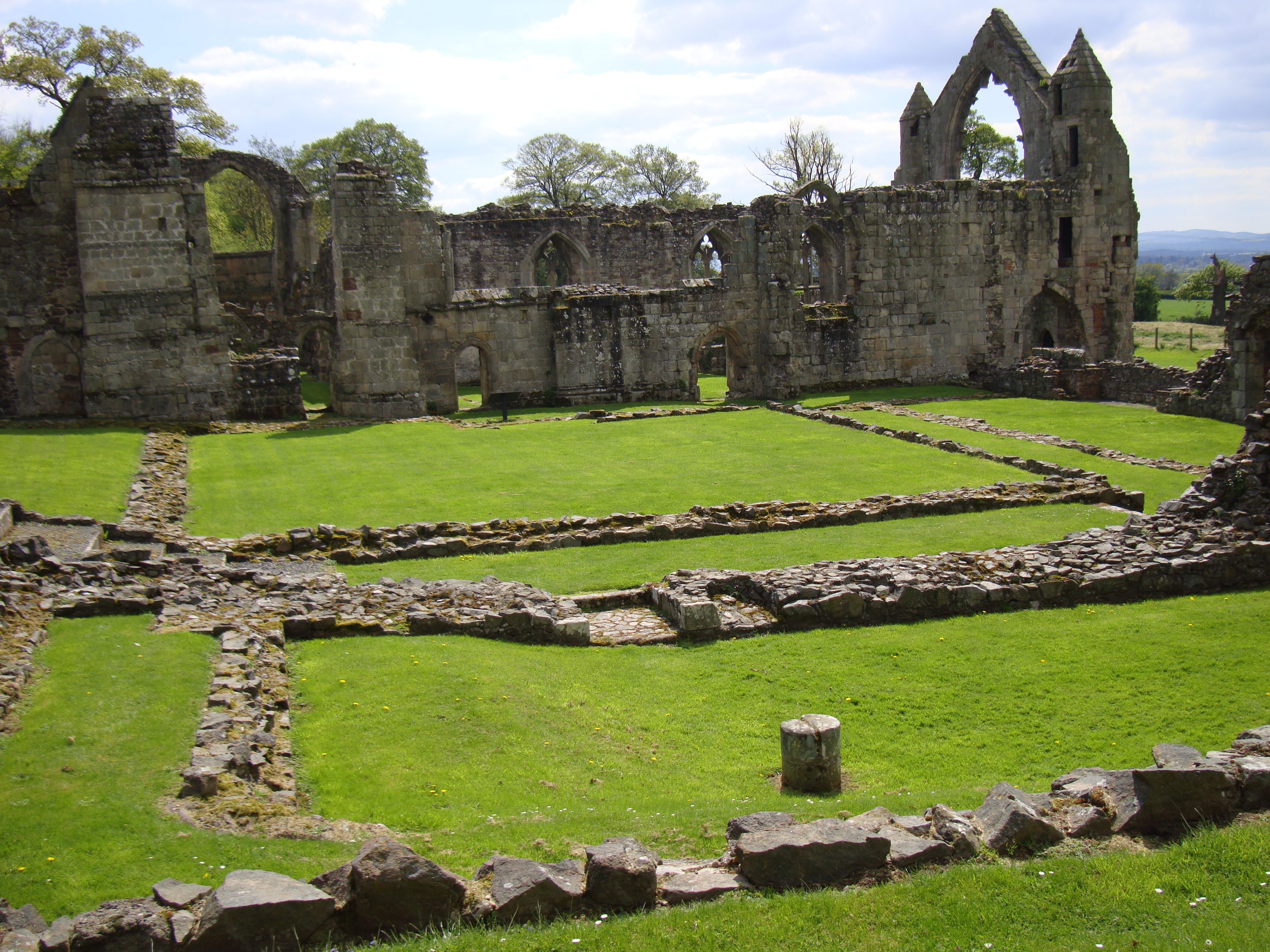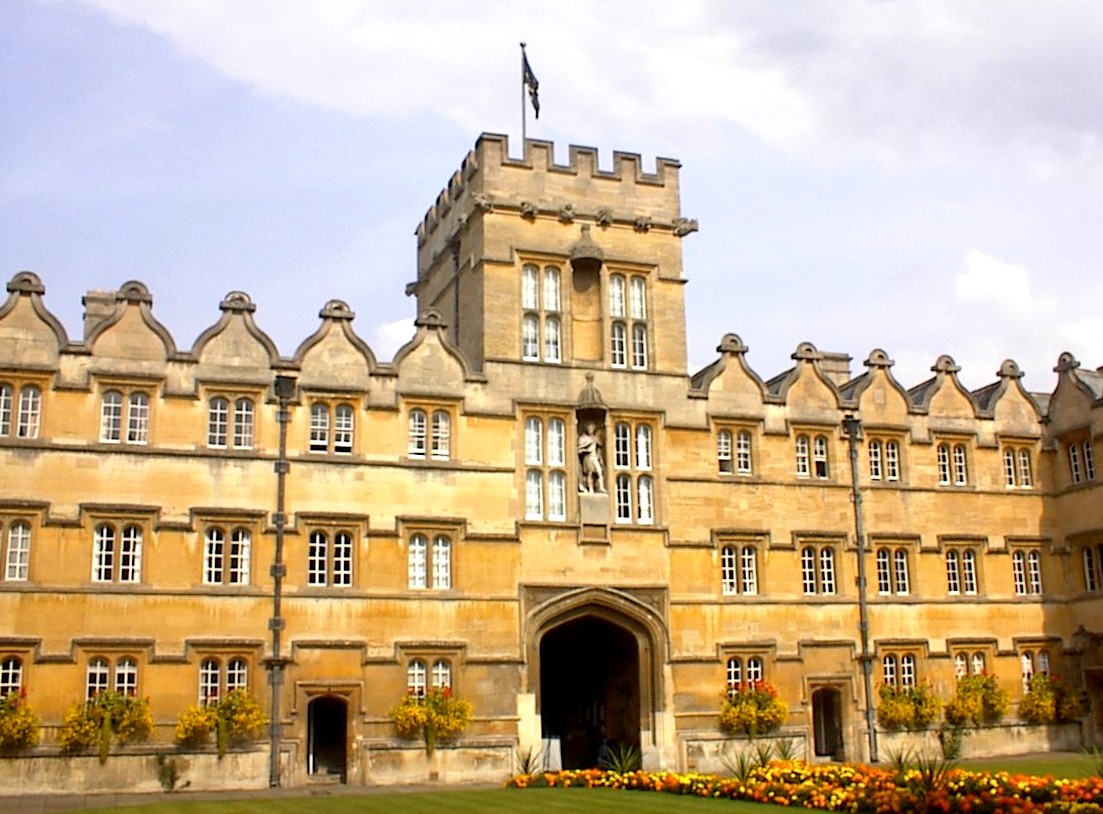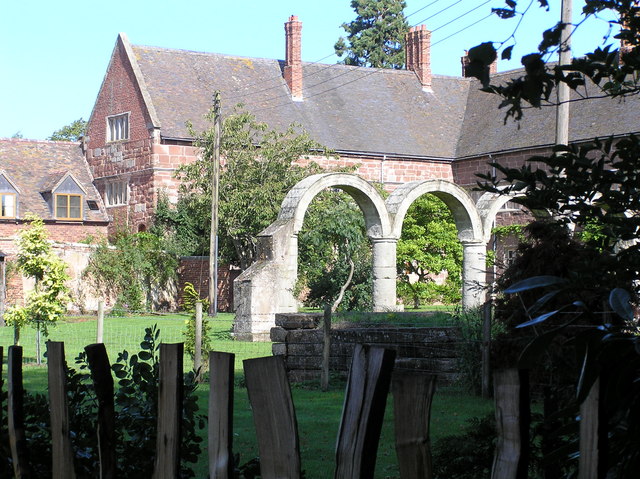|
John Barker (died 1618)
John Barker (15 March 1579–30 March 1618) was an English politician. Barker was born in 1579, son of Rowland Barker (died 1600) of Haughmond Abbey, Shropshire, and his first wife Cicely, daughter of Andrew Charlton of Apley Castle, Shropshire. He was educated at Shrewsbury School and University College, Oxford, where he graduated as B.A. in 1597, then entered Gray's Inn to study law in 1599. The following year he succeeded to his father's estates. He was a Member (MP) of the Parliament of England for Shrewsbury in 1601, and became a county magistrate (J.P.) for Shropshire by 1608. Barker married Margaret, daughter of Sir Francis Newport (died 1623) of High Ercall. He died 12 days after his wife's burial in March 1618 aged 39 and was buried at St Andrew's Church, Wroxeter St Andrew's Church is a redundant Church of England parish church in the village of Wroxeter, Shropshire, England. It is recorded in the National Heritage List for England as a designated Grade I lis ... [...More Info...] [...Related Items...] OR: [Wikipedia] [Google] [Baidu] |
Haughmond Abbey
Haughmond Abbey ( ) is a ruined, medieval, Augustinians, Augustinian monastery a few miles from Shrewsbury, England. It was probably founded in the early 12th century and was closely associated with the FitzAlan family, who became Earls of Arundel, and some of their wealthier vassals and allies. It was a substantial, successful and wealthy house for most of its four centuries, although evidence of abuses appeared before its dissolution in 1539. The buildings fell into disrepair and the church was largely destroyed, although the remains of some of the domestic buildings remain impressive. The site is now in the care of English Heritage and is open to the public during the summer. Origins The cartulary of the abbey begins with a statement of its foundation story, as understood at the time it was written down, probably in the Late Middle AgesDodsworth and Dugdale''Monasticon Anglicanum'', p. 46/ref> Robert William Eyton, R. W. Eyton, the assiduous Victorian historian of Shr ... [...More Info...] [...Related Items...] OR: [Wikipedia] [Google] [Baidu] |
Shropshire
Shropshire (; alternatively Salop; abbreviated in print only as Shrops; demonym Salopian ) is a landlocked historic county in the West Midlands region of England. It is bordered by Wales to the west and the English counties of Cheshire to the north, Staffordshire to the east, Worcestershire to the southeast, and Herefordshire to the south. A unitary authority of the same name was created in 2009, taking over from the previous county council and five district councils, now governed by Shropshire Council. The borough of Telford and Wrekin has been a separate unitary authority since 1998, but remains part of the ceremonial county. The county's population and economy is centred on five towns: the county town of Shrewsbury, which is culturally and historically important and close to the centre of the county; Telford, which was founded as a new town in the east which was constructed around a number of older towns, most notably Wellington, Dawley and Madeley, which is today th ... [...More Info...] [...Related Items...] OR: [Wikipedia] [Google] [Baidu] |
Apley Castle
Apley Castle was a medieval fortified manor in the village of Hadley, Shropshire, England. History Apley Castle was a moated, fortified manor house in Hadley near Wellington. By the early 14th century the manor was owned by the Charlton family, who had become major landowners in the region, and in 1327 Sir Alan Charlton received a licence to crenellate the manor house. The building work occurred shortly afterwards, producing a square building set around a central courtyard. Charlton's descendants expanded the castle considerably into an Elizabethan mansion during the late 16th and early 17th century, using grey ashlar stone. Margaret Charlton, the religious non-conformist, was born here in 1636. She would be a supporter and later wife of Richard Baxter. In 1642 the castle passed by marriage to Thomas Hanmer, who married Margaret's mother (and very recent widow) Mary Charlton. With the outbreak of the English Civil War The English Civil War (1642–1651) was a series of ... [...More Info...] [...Related Items...] OR: [Wikipedia] [Google] [Baidu] |
Shrewsbury School
Shrewsbury School is a public school (English independent boarding school for pupils aged 13 –18) in Shrewsbury. Founded in 1552 by Edward VI by Royal Charter, it was originally a boarding school for boys; girls have been admitted into the Sixth Form since 2008 and the school has been co-educational since 2015. As of Michaelmas Term 2020, the school has 807 pupils: 544 boys and 263 girls. There are eight boys' boarding houses, four girls' boarding houses and two for day pupils. There are approximately 130 day pupils.Independent Schools Inspectorate report 2007 Retrieved 19 March 2010 The present site, to which the school moved in 1882, is on the south bank of the |
University College, Oxford
University College (in full The College of the Great Hall of the University of Oxford, colloquially referred to as "Univ") is a constituent college of the University of Oxford in England. It has a claim to being the oldest college of the university, having been founded in 1249 by William of Durham. As of 2018, the college had an estimated financial endowment of £132.7m. The college is associated with a number of influential people, including Clement Attlee, Harold Wilson, Bill Clinton, Neil Gorsuch, Stephen Hawking, C. S. Lewis, V. S. Naipaul, Robert Reich, William Beveridge, Bob Hawke, Robert Cecil, and Percy Bysshe Shelley. History A legend arose in the 14th century that the college was founded by King Alfred in 872. This explains why the college arms are those attributed to King Alfred, why the Visitor is always the reigning monarch, and why the college celebrated its millennium in 1872. Most agree that in reality the college was founded in 1249 by William of Durham ... [...More Info...] [...Related Items...] OR: [Wikipedia] [Google] [Baidu] |
Gray's Inn
The Honourable Society of Gray's Inn, commonly known as Gray's Inn, is one of the four Inns of Court (professional associations for barristers and judges) in London. To be called to the bar in order to practise as a barrister in England and Wales, an individual must belong to one of these inns. Located at the intersection of High Holborn and Gray's Inn Road in Central London, the Inn is a professional body and provides office and some residential accommodation for barristers. It is ruled by a governing council called "Pension," made up of the Masters of the Bench (or "benchers,") and led by the Treasurer, who is elected to serve a one-year term. The Inn is known for its gardens (the “Walks,”) which have existed since at least 1597. Gray's Inn does not claim a specific foundation date; none of the Inns of Court claims to be any older than the others. Law clerks and their apprentices have been established on the present site since at latest 1370, with records dating from 1381 ... [...More Info...] [...Related Items...] OR: [Wikipedia] [Google] [Baidu] |
Member Of Parliament
A member of parliament (MP) is the representative in parliament of the people who live in their electoral district. In many countries with bicameral parliaments, this term refers only to members of the lower house since upper house members often have a different title. The terms congressman/congresswoman or deputy are equivalent terms used in other jurisdictions. The term parliamentarian is also sometimes used for members of parliament, but this may also be used to refer to unelected government officials with specific roles in a parliament and other expert advisers on parliamentary procedure such as the Senate Parliamentarian in the United States. The term is also used to the characteristic of performing the duties of a member of a legislature, for example: "The two party leaders often disagreed on issues, but both were excellent parliamentarians and cooperated to get many good things done." Members of parliament typically form parliamentary groups, sometimes called caucuse ... [...More Info...] [...Related Items...] OR: [Wikipedia] [Google] [Baidu] |
Parliament Of England
The Parliament of England was the legislature of the Kingdom of England from the 13th century until 1707 when it was replaced by the Parliament of Great Britain. Parliament evolved from the great council of bishops and peers that advised the English monarch. Great councils were first called Parliaments during the reign of Henry III (). By this time, the king required Parliament's consent to levy taxation. Originally a unicameral body, a bicameral Parliament emerged when its membership was divided into the House of Lords and House of Commons, which included knights of the shire and burgesses. During Henry IV's time on the throne, the role of Parliament expanded beyond the determination of taxation policy to include the "redress of grievances," which essentially enabled English citizens to petition the body to address complaints in their local towns and counties. By this time, citizens were given the power to vote to elect their representatives—the burgesses—to the H ... [...More Info...] [...Related Items...] OR: [Wikipedia] [Google] [Baidu] |
Shrewsbury (UK Parliament Constituency)
Shrewsbury was a parliamentary constituency in England, centred on the town of Shrewsbury in Shropshire. It was founded in 1290 as parliamentary borough, returning two members to the House of Commons of England until 1707, then of the House of Commons of Great Britain from 1707 to 1800, and of the House of Commons of the United Kingdom from 1801 to 1885. Under the Redistribution of Seats Act 1885, its representation was reduced to one Member of Parliament (MP). The parliamentary borough was abolished at with effect from the 1918 general election, and the name transferred to a new county constituency. The constituency was renamed Shrewsbury and Atcham, but continued with the exact same boundaries as had been in effect from 1974-1983. Famous MPs have included Sir Philip Sidney in 1581, Robert Clive (known as 'Clive of India') from 1761 to his death in 1774, and Benjamin Disraeli (later Prime Minister) in 1841–47. Boundaries 1918–1950: The Borough of Shrewsbury, and the Ru ... [...More Info...] [...Related Items...] OR: [Wikipedia] [Google] [Baidu] |
Francis Newport (died 1623)
Sir Francis Newport (ca. 1555 – 6 March 1623) was an English politician. Francis was born the eldest son of Sir Richard Newport and the brother of Andrew. He was educated at Shrewsbury School (1569–1571) and Magdalen College, Oxford (1574) and studied law at the Inner Temple in 1577. He succeeded his father in 1570 and was knighted in 1603. He was appointed a Justice of the Peace (J.P.) for Shropshire from c. 1582, sheriff for 1586–1587 and 1601–1602, and a Deputy Lieutenant of the county in 1590. He was a member of the Council of the Marches of Wales in 1601. He commissioned the rebuilding of his two country houses, Eyton-on-Severn Hall (completed 1595) and High Ercall Hall (completed 1608). He was elected a Member (MP) of the Parliament of England for Shropshire in 1593. He married Beatrice, the daughter of Roland Lacon of Willey and had with her three sons and four daughters. His son Richard Richard is a male given name. It originates, via Old French, fr ... [...More Info...] [...Related Items...] OR: [Wikipedia] [Google] [Baidu] |
High Ercall
High Ercall, also known in the past as Ercall Magna, is a village in the borough of Telford and Wrekin and ceremonial county of Shropshire, England. The civil parish is still called Ercall Magna, and had a total population of 1,679 at the 2001 census,Ercall Magna CP ONS reducing to 1,639 at the 2011 census. The parish includes the villages of Rowton, and , ... [...More Info...] [...Related Items...] OR: [Wikipedia] [Google] [Baidu] |
St Andrew's Church, Wroxeter
St Andrew's Church is a redundant Church of England parish church in the village of Wroxeter, Shropshire, England. It is recorded in the National Heritage List for England as a designated Grade I listed building, and is under the care of the Churches Conservation Trust. Both the village of Wroxeter and the church are in the southwest corner of the former Roman town of ''Viroconium''. History The earliest parts of the church are Anglo-Saxon but the precise date of its foundation is uncertain. There is strong circumstantial evidence that a church was built in the area of the Roman bath in the 5th or 6th century. A preaching cross was erected in the churchyard in the 8th century. It is thought that the oldest existing fabric in the present church dates from the 8th or 9th century. This consists of large stones which came from the public buildings of the Roman town. By the time of the Domesday Book in 1086 the church had a college of four priests. In 1155 William F ... [...More Info...] [...Related Items...] OR: [Wikipedia] [Google] [Baidu] |




